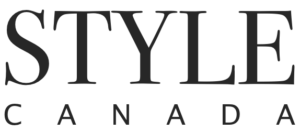For some people, this year has been an all-out fight for survival (financially). No matter where you fall on the spectrum, now is the time to get your finances organized since the new year just started. So, how do you accomplish that, especially with ongoing recession? Here we will provide you with 3 simple steps to accomplishing this.

1- Gather all financial statements
You can start by getting organized, no matter how boring or tedious that might sound. First, gather all of your financial statements, both digital and paper. These should include:
1. Utilities (gas, water, electricity, etc,)
2. Bills (cell phone, cable, internet, etc.)
3. Credit card statements
4. Anything else you spend money on (memberships, subscriptions, kids activities, etc.)
2- Make a spreadsheet
Now, I like using a pen, paper and highlighters to organize my finances. Some people love Excel. Honestly, whatever method works best for you is the correct choice. To get started, create a table similar to the one below:
| Statement | Balance/previous payment | Interest rate (if applicable) | Is this debt? Y/N |
| 1. Visa | |||
| 2. Mortgage payment | |||
| 3. Gym membership |
Then, start filling in the information. This could take a while, and you may cry a little. That said, if you’ve fallen on financial hard times, it’s extremely important to see where your money is going. Which brings me to your next task: evaluating how much debt do you really have.
If you have consumer debt, you’re not alone; the average Canadian owes more than they make. I am not a certified financial advisor, so I can’t tell you where to put your money. What I can say is that you need to know the pulse of your financial health.
By organizing your money, you can get a sense of how much you owe. This can be very emotional. When I had nearly $30,000 in debt, I would cry myself to sleep. Feeling like you’re falling down a rabbit hole with no way out can be overwhelming. Personally, I used the snowball approach (a debt reduction strategy where you pay off debt in order of smallest to largest) and after a lot of stop-starts, I finally paid off my debt.
3- Make a Budget
Finally, you need to make a budget. This can be very frustrating. I tried for years to find a budgeting model which works for me. I have found success using the Mint app – it customizes a budget based on my income and what I typically spend money on. If you can use an app like Mint to automate a budget, that may be the easiest way to start.

Maybe, right now, you just get your finances in order. Then, once you’ve wrapped your head around the numbers, look at what you owe. Afterward, start to think about a budget and perhaps download an app to try. If last year has made you face your finances head-on, just know this emotional roller coaster ride with money is something many other people are on.


